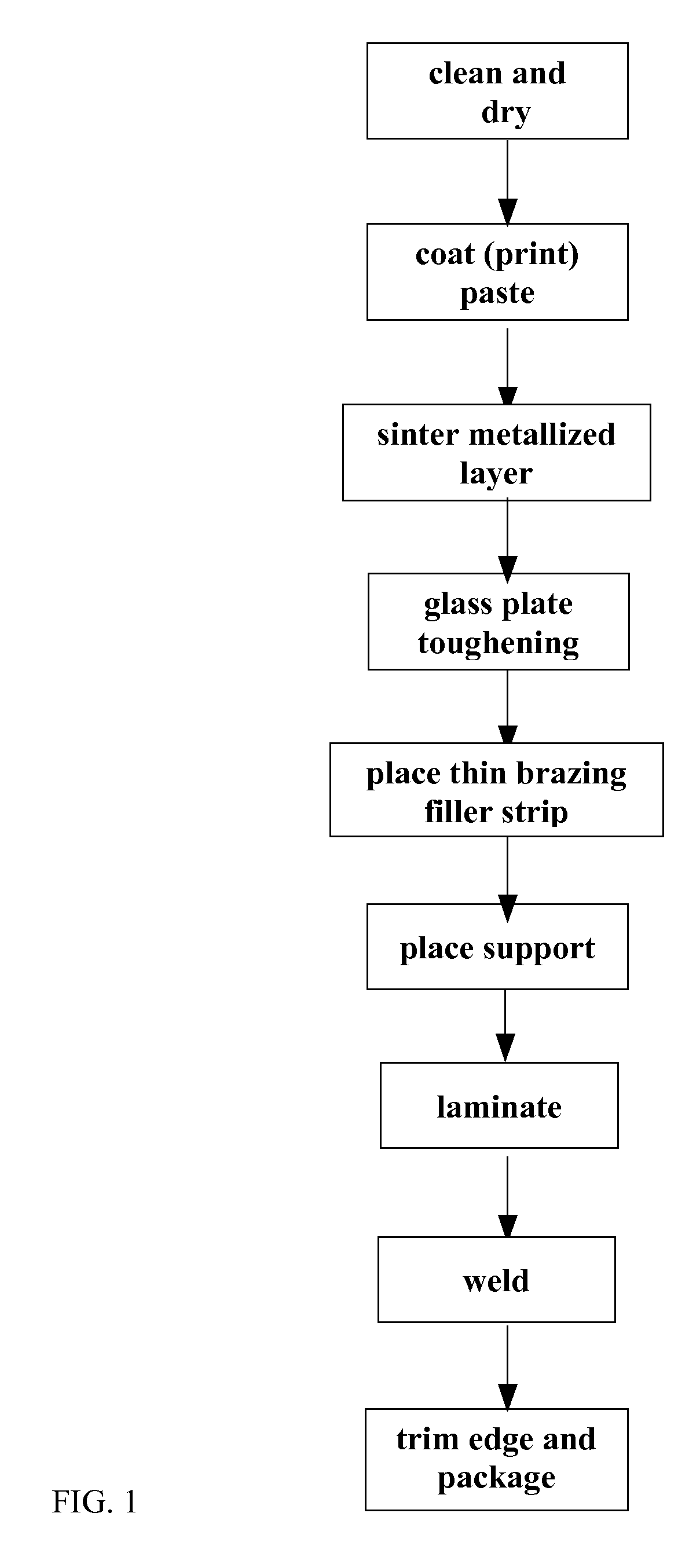Compound Sealing Method for Vacuum Glass
- Summary
- Abstract
- Description
- Claims
- Application Information
AI Technical Summary
Benefits of technology
Problems solved by technology
Method used
Image
Examples
Embodiment Construction
[0041]Sectional views of two-layer compound glass structure manufactured are shown in FIG. 2 and FIG. 3 according to the compound sealing method of the invention, a sectional view of a three-layer compound glass structure shown in FIG. 4, a sectional view of a toughened insulated glass structure is shown in FIG. 5, and numbers in the drawings respectively represent the following items: 1 for upper glass plate, 4 for metalized layer formed after sintering treatment of glass plate, 3 for brazing filler, 5 for lower glass plate, 2 for intermediate glass plate, 6 for intermediate support and 7 for metal spacer.
[0042]FIG. 1 shows the main technological process for the compound sealing of toughened glass plates by the compound sealing method of the invention, and this technological process will be explained below based on the two-layer compound glass in FIG. 2:
[0043]1) Cut two glass plates based on dimension requirements, and complete their edging, and washing away their grease contaminat...
PUM
| Property | Measurement | Unit |
|---|---|---|
| Temperature | aaaaa | aaaaa |
| Temperature | aaaaa | aaaaa |
| Electrical resistance | aaaaa | aaaaa |
Abstract
Description
Claims
Application Information
 Login to View More
Login to View More - R&D
- Intellectual Property
- Life Sciences
- Materials
- Tech Scout
- Unparalleled Data Quality
- Higher Quality Content
- 60% Fewer Hallucinations
Browse by: Latest US Patents, China's latest patents, Technical Efficacy Thesaurus, Application Domain, Technology Topic, Popular Technical Reports.
© 2025 PatSnap. All rights reserved.Legal|Privacy policy|Modern Slavery Act Transparency Statement|Sitemap|About US| Contact US: help@patsnap.com



